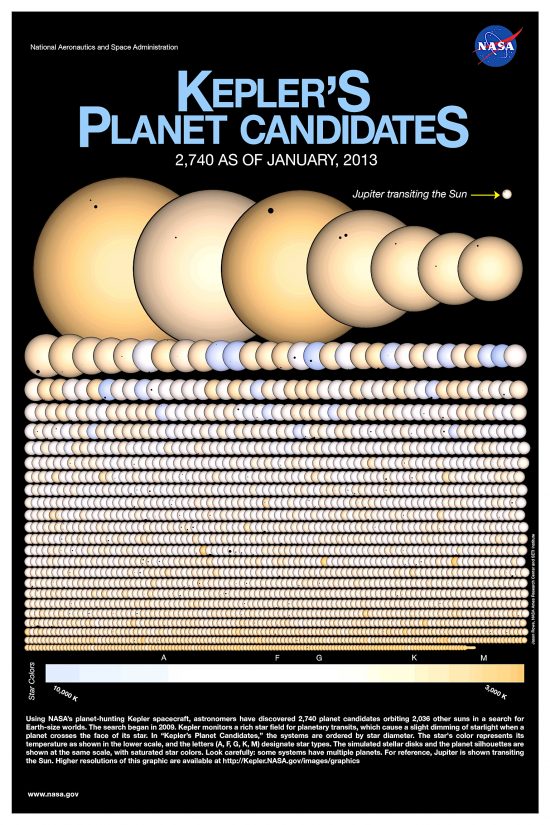
Oct 29, 2019
The Kepler Space Telescope is defunct.
The Kepler Space Telescope was launched March 7, 2009 on a planetary search mission. Before problems occurred, Kepler identified 989 “confirmed” planets around other stars. Kepler did not use Doppler shift as its means of detection. It used a photometer to measure the reduction in light output as an object passes in front of a subject star. Kepler was able to scan 150,000 stars simultaneously utilizing that method. Kepler was re-commissioned for other purposes when its planet-hunting ability ceased in May 2013.
Kepler’s search was based on the Nebular Hypothesis and a gravitational view of planetary evolution. As written many times in the past, nebular clouds are said to condense into hot balls of gas that somehow ignite into thermonuclear fire. So-called “eddies” in the subsequent protoplanetary disc are what form planets. The hypothesis has a major fault: it does not explain why planets in the Solar System possess about 97% of its total angular momentum, when their combined masses are less than a tenth of one per cent of the Sun’s mass. The theory is given a crutch by suggesting that the Sun has a companion that moves on a long, parabolic orbit.
A puzzle for the planet-hunters is that, after studying 909 planets in the Kepler catalogue, they are close in size and similarly spaced in their orbits. The discovery is independent of other stellar characteristics. Such an observation was not expected when compared to ideas about how star systems form. Astronomers were forced back to the theoretical drawing board: something about the protoplanetary disks that formed the planets determines how big they grow and how far apart from each other they are.
In an Electric Universe, that “something” is electricity.
Since many exoplanets are “super-Jupiters”, with orbits closer to their stars than Mercury is to the Sun, an argument for their creation in stellar electrical expulsion can be made. Also, as mentioned, rocky bodies, like Mercury or the Moon, are ejected from larger, highly charged objects. They are not born in dusty eddies surrounding a stellar “cocoon”.
Planets are like beads on a spring that expands and contracts in response to electrical conditions. Their spacing and sorting is most likely because they are charged objects inside stellar plasmaspheres, aligning themselves according to their electrical characteristics, density and composition. That is why the exoplanets (provided common theories are correct and they exist, in the first place) favor an arrangement that is not expected by the mainstream.
Electric Universe advocate, Wal Thornhill, wrote:
“Gravity is easily overcome by electromagnetic repulsion, as we observe in solar mass ejections. Consequently, stars have expulsion jets and disks rather than accretion disks. Sometimes, for dynamic reasons or to spread the electrical load over a greater surface area, forming stars will electrically fission into binaries or multiple star systems. This scenario may explain some of the surprising abundance of multiple star systems and close orbiting ‘hot Jupiters.’”
Stephen Smith
The Thunderbolts Picture of the Day is generously supported by the Mainwaring Archive Foundation.












